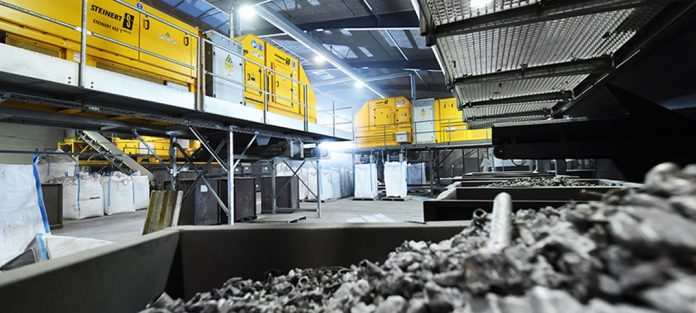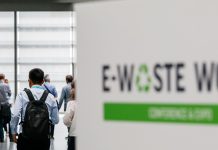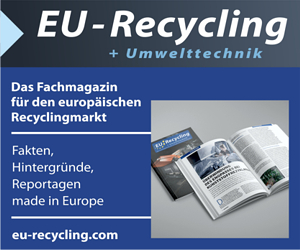As more and more electric cars are travelling on the roads of Europe, this is leading to an increase in the use of the critical metals required for components such as electric motors and electronics. With the current raw material production levels there will not be enough of these metals in future – not even if recycling increases. This is revealed by the findings of a major survey led by Chalmers University of Technology, Sweden, on behalf of the European Commission.
Electrification and digitalisation are leading to a steady increase in the need for critical metals* in the EU’s vehicle fleet. Moreover, only a small proportion of the metals are currently recycled from end-of-life vehicles. The metals that are highly sought after, such as dysprosium, neodymium, manganese and niobium, are of great economic importance to the EU, while their supply is limited and it takes time to scale up raw material production. Our increasing dependence on them is therefore problematic for several reasons.
“The EU is heavily dependent on imports of these metals because extraction is concentrated in a few countries such as China, South Africa and Brazil. The lack of availability is both an economic and an environmental problem for the EU, and risks delaying the transition to electric cars and environmentally sustainable technologies. In addition, since many of these metals are scarce, we also risk making access to them difficult for future generations if we are unable to use what is already in circulation”, says Maria Ljunggren, Associate Professor in Sustainable Materials Management at Chalmers University of Technology.
A serious situation, but Swedish deposit offers hope
Ljunggren points out that the serious situation affecting Europe’s critical and strategic raw materials is underlined in the Critical Raw Materials Act recently put forward by the European Commission. The Act emphasises the need to enhance cooperation with reliable external trading partners and for member states to improve the recycling of both critical and strategic raw materials. It also stresses the importance of European countries exploring their own geological resources.
In Sweden the state-owned mining company LKAB reported on significant deposits of rare earth metals in Kiruna at the start of the year. Successful exploration enabled the company to identify mineral resources of more than a million tonnes of oxides – which they now describe as the largest known deposit of its kind in Europe.
“This is extremely interesting, especially the discovery of neodymium which, among other things, is used in magnets in electric motors. The hope is that it will help make us less dependent on imports in the long run,” she says.
Substantial increase in the use of critical metals
Together with the Swiss Federal Laboratories for Materials Science and Technology (Empa), Ljunggren has surveyed the metals that are currently in use in Europe’s vehicle fleet. The assignment comes from the European Commission’s Joint Research Centre (JRC), and has resulted in an extensive database that shows the presence over time of metals in new vehicles, vehicles in use and vehicles that are recycled.
The survey, which goes back as far as 2006, shows that the proportion of critical metals has increased significantly in vehicles, a development which the researchers believe will continue. Several of the rare earth elements are among the metals that have increased the most.
“Neodymium and dysprosium usage has increased by around 400 and 1,700 percent respectively in new cars over the period, and this is even before electrification had taken off. Gold and silver, which are not listed as critical metals but have great economic value, have increased by around 80 percent,” says Ljunggren.
The idea behind the survey and the database is to provide decision-makers, companies and organisations with an evidence base to support a more sustainable use of the EU’s critical metals. A major challenge is that these materials, which are found in very small concentrations in each car, are economically difficult to recycle.
Recycling fails to meet requirements
“If recycling is to increase, cars need to be designed to enable these metals to be recovered, while incentives and flexible processes for more recycling need to be put in place. But that’s not the current reality”, says Ljunggren, who stresses that a range of measures are needed to deal with the situation.
“It is important to increase recycling. At the same time, it is clear that an increase in recycling alone cannot meet requirements in the foreseeable future, just because the need for critical metals in new cars is increasing so much. Therefore there needs to be a greater focus on how we can substitute other materials for these metals. But in the short term it will be necessary to increase extraction in mines if electrification is not to be held back”, she says.
More about the survey and the database
- The survey of metals in the EU’s vehicle fleet has been carried out by Maria Ljunggren at Chalmers in collaboration with the Swiss Federal Laboratories for Materials Science and Technology, EMPA, on behalf of the European Commission’s Joint Research Centre (JRC).
- The results are set out in the Raw Materials in Vehicles database which covers 60 vehicle types under 3.5 tonnes from all the EU member states. The survey covers eleven different metals in new vehicles, vehicles in use and vehicles that are recycled. It covers the period from 2006 to 2023, with the last three years being a forecast.
- The research is also described in the report Material composition trends in vehicles: critical raw materials and other relevant metals.
- Maria Ljunggren is also involved in an ongoing EU project on critical raw materials, FutuRaM, (Future availability of raw materials), which will enhance knowledge about the potential supply of recycled critical raw materials by the year 2050.
More about critical metals*
Critical metals refer to metals that are of great economic importance to a certain industry, industrial sector or a geographical area – where there is a risk of supply shortages for various reasons.
- The switch to a green and digital economy is driving the dependence on critical metals. These are required in items such as computers, smartphones, electronic components, solar cells, batteries and electric motors. Global extraction is limited to a few countries among which China has a dominant position. Large scale extraction also takes place in countries such as Brazil, Russia, South Africa and the USA.
- The recycling of critical metals is extremely limited and does not meet production needs. Exploration is under way to identify new deposits. The Swedish mining company LKAB issued a press release in early 2023 about its major discovery of rare earth metals in Kiruna.
- The European Commission has listed the metals and minerals regarded as crucial to our society and for our welfare. Read more about critical raw materials in the EU.
- Read a report from the Swedish parliament about innovation-critical metals and minerals (in Swedish).
Source: Chalmers University of Technology







